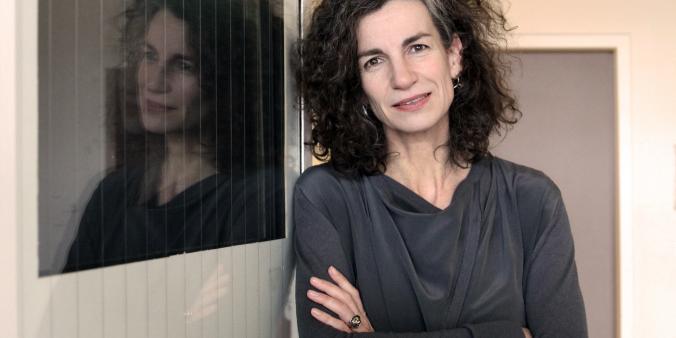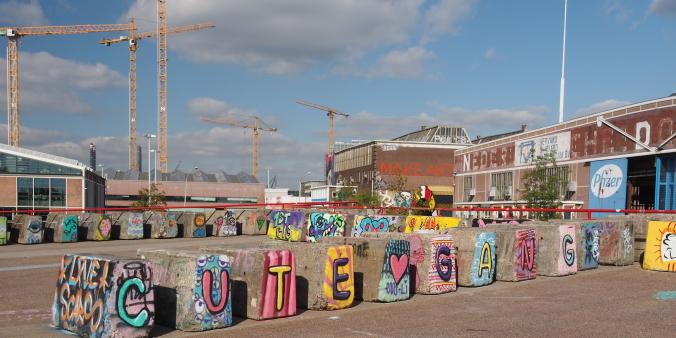
What does cultural internationalisation mean anno 2021?
By Errol Boon
In expectation of the upcoming new international cultural policy for 2021-2024, DutchCulture will organise a conference on internationalisation in the cultural sector on the 8th of July. The main talking points: what does international artistic practice entail for Dutch artists in the near future? What are the risks one should anticipate? How to develop a proactive strategy in which the possible consequences of your international plans are taken into account? In short, how can artists and cultural workers reformulate their international ambitions in the light of the changing world of tomorrow? Researcher Errol Boon wrote a short essay on the challenges of the modern globalised world that artists face when operating internationally.
The promise of a global village
For centuries, the intrinsic value of an international orientation was a matter beyond doubt for most European artists. The central truism that artistic practice should never be limited by contingent national borders led to the idea that cultural exchange between artists or audiences from different countries had the potential to fundamentally broaden the artist’s perspective beyond the limits in which bourgeois citizens were caught up. Hence, the opportunity of internationalisation became one of the key indications of artistic freedom. Especially in the 20th century, transcending national borders became a foremost ambition of avant-gardists, intellectuals and artists - a mentality well illustrated by Rudolf Goldscheid in the 1920s: ‘We have to learn to feel, think, want, and especially act internationally, with the very same passionate conviction with which people hitherto served nationalism or patriotism’.
After the two world wars, such ideals were even more commonly held. Increasingly, globalisation became a promise - not only cultural exchange, but every aspect of society was believed to live up to the promise of the global village. Through an intensive increase of communication devices, highly developed mobility possibilities and far-reaching digitalisation, the distances between people, goods and information were expected to become smaller and more accessible. Hence, our planet, which was heretofore characterised by unbridgeable distances and uncontrollable greatness, was believed to gradually transform into a happy village, in which everyone would stand in peaceful and solidary contact with their ‘neighbours’ on the other side of the world.
The disenchantment of the globalisation
However, the communis opinio seems to be tilting: along with an increase of international cultural activities, there is an increase of critical voices about that limitless internationalisation as well. Whereas artists once could be reconsidered as being at the vanguard of globalisation, by advocating internationalisation to the betterment of artistic freedom, we currently observe that globalisation is sometimes also experienced as a demand imposed on artists by the highly globalised, competitive field they inhabit: for a lot of artists internationalisation is a bare necessity in order to survive. In other words, whereas globalisation started off as an ideality that would serve our human values, in many aspects it became an inconsumable reality, something that has to be served by us instead of for us – while in the meantime its purpose and value escape most people’s understanding.
This demand for internationalisation has become problematic in the light of what one might call the general disenchantment of globalisation, which increasingly characterises the experience of our present century. I will argue here that the promise of the global village turned out to be a broken promise. Testimony to this reasoning is the fact that, perhaps more than ever, policymakers, artists, funders and intellectuals are waking up to the awareness that internationalisation in the arts has lost its once self-evident virtue and innocence. That means that travelling for the mere sake of prestige or an increase of the number of performances are no longer considered sufficient legitimisation for one’s international ambitions. Therefore, many artists find themselves confronted with the fact that they have to reformulate their international ambitions in the light of the disenchantment of the globalisation. To better understand this necessity for reformulating international ambitions, let us briefly resume the three main broken promises of globalisation, each of which places cultural workers for a specific challenge of rethinking their international practice.
The challenge of inequality and segregation
First of all, globalisation’s broken promise lies in the fact that only a limited amount of people is able to participate in its mobility and communication ‘achievements’, whereas a huge share of the global population, not to say the majority of humankind, finds itself increasingly isolated in miserable circumstances. Zygmunt Bauman famously used the term ‘the wasted lives’ to designate those who cannot partake in the achievements of globalisation. Throughout centuries, a global economic, cultural and political order has arisen, which is merely undergone by the vast majority of people, rather than them actively participating in it. On a local level, we witness anonymous masses of lives structurally polished away out of the international, cosmopolitan, touristic city centres of Europe into the poverty-stricken outskirts. This increase of segregation is not only visible in the context of cities, but also on a global level, as historians and economics have critically asked whether globalisation has not rather sharpened the inequality between the global north and south, instead of bringing the haves and the have-nots closer together.
This segregation and inequality pose several challenges to the international ambitions of artists. First of all, if globalised cities become more and more alike, whereas subordinate classes are pushed to the outskirts, geographic internationalisation does not inherently involve a demographic diversification of the audience. Hence, artists often have difficulties to reach a diverse public in Europe’s homogenous city centres: going internationally often does not guarantee that one genuinely steps out of one’s ‘bubble’. Secondly, since the inequality between the global south and north is structurally anchored within a globalised power structure (in which haves and have-nots stand in an interdependent relation to one another), the idea of a neutral space of collaboration is a naive blind spot that hinders fair cooperation between artists. Increasingly, awareness arises concerning the need to see that international artists work in world of power structures that are already there prior to activities themselves. Stepping into an intercontinental project in 2021 involves the challenge of actively pursuing neutralisation of these power structures during the course of the project.
The challenge of international solidarity
The second broken promise of globalisation lies in the painful fact that the diminishing of strict national borders has, in many respects, not led to international solidarity which was expected to follow from international collaboration. The answer to the fading of national sovereignty exists rather in a resurrection of nationalism, protectionism, populism and other forms of resentment politics. Political phenomena like the election of Trump, the British exit from the European Union and sharpened border controls show us that alleged opposition between internationalisation and nationalism, as we saw in Goldschein's quote for example, is far more complex than it initially appeared.
The old avant-gardist idea that internationalisation would lead to international solidarity, and thus that artistic international projects lead to reciprocal understanding and empathy, has lost its self-evidence and thus need to be advocated again. On the one hand we see that modern-day political resentment is very much directed to the internationalisation our life world, but on the other hand, most artists and intellectuals still hold the active, expressive and imaginative power of art, especially within the context of an intercultural collaboration, to be the most promising antidote to prevent disappointment from turning into resentment. The challenge artists face thus lies in finding out how art is actually able to convey perspectives that genuinely bridge cultural differences between people. How can intercultural knowledge truly enlarge our understanding, respect and solidarity with the other? How can art realise its critical potential, so that it can indeed create a democratic space in which reflection and change can flourish?
The challenge of facing the ecological dilemma
The last but perhaps foremost sense in which internationalisation has definitely lost its innocence concerns the ecological impact of globalisation. Over the course of the present century, the awareness about the alarming ecological repercussions of globalisation has increased to the extent to which it cannot be ignored any longer. Critics therefore constantly reaffirm the lack of political vigour and constructive solutions concerning the climate crisis – solutions that also became harder to reach within the complex international political order of a globalised world.
Even more than the previous two challenges, ecological considerations place artists in the position of a true dilemma: a choice-situation of which both options are highly unsatisfactory. Travelling less or differently is quickly experienced as a loss with regard to other values – not only a financial loss, but a defeat in terms of almost all values and promises of internationalisation. Consequently, this ecological dilemma creates structural feelings of guilt and moral conflicts, in which we must often do what we actually think is bad. The situation becomes even more difficult in the context of artistic mobility, because, firstly, artists often only get the cheapest flight tickets reimbursed, secondly, because exclusivity or lack of time foften orbiddens extra bookings in the country of destination, and, lastly, because it generally brings more prestige to play in different countries than to stay in one country for a longer time. Therefore, arists have to stop passively awaiting alleged technological miracles, and accept the challenge of actively finding ways in which we can transform these moral conflicts into a structural and optimistic quest for sustainable forms of international cultural practice.
A synthesis of international ambitions and local activities
The task to reformulate our international artistic ambitions in the light of a globalised world arises out of a very difficult paradox that places artists in an often dubious battle. On the one hand, we have seen that within the present context of a globalised world, internationalisation has lost its innocence: the present dynamic world involves complex challenges, such as intercultural communication, fair cooperation and climate change. Hence, values like prestige or an increase of performance opportunities are not sufficient enough to legitimise international projects. On the other hand, however, within the same context of a globalised world, internationalisation is for many artist either an honest passion to a truly meaningful intercultural collaboration, or even a bare necessity in order to survive in a globalised world. Indeed, internationalisation is not the innocent, admirable ideal of the old world anymore - it is an ineluctable, inconsumable and unstoppable reality. Thus we find ourselves in a difficult paradox in which the very same context of a globalised world both forces and restrains us to cross borders. As in every paradox, eliminating one of its opposite sides is not an option: we can neither ignore issues such as power inequality or climate change, nor should we just stop working abroad.
Interestingly, in reaction to this dilemma, we find two important movements within the cultural sector. On the one hand, there are artists and cultural workers that employ the possibilities of globalisation in order to face its challenges, as we see with intellectuals and cultural professionals flying the globe to discuss issues on climate change; on the other hand we notice a tendency among some artists to return to the local community, as we see in projects that encounter the commons as the primary locus of artistic practice. However, for most artists the appropriate reaction to challenges of globalisation cannot exist in an either/or-situation. Rather, they seek to find a solution to the riddle in a synthesis of international ambitions and local activities, in such a manner that both do not form detached methods but rather two sides of the same strategy with which one could appropriately react on the challenges of the globalisation. Such a strategy involves actively asking what the international value of your local activities entails and how internationalisation can contribute to local developments.
Anno 2021, internationalisation remains one of the most important and promising potentialities of artistic freedom, but it must always be prevented from becoming a dead dogma. Rethinking artistic internationalisation thus by no means implies relinquishing artistic internationalisation, but rather, it involves finding a more thorough understanding of the necessity and value of international ambitions. Thus we face the challenges without taking internationalisation for granted. By creating an honest foundation for the value of international work, incorporating the present day challenges rather than looking away from them, one is, on the one hand, armed for the critical questions one will sooner or later almost inevitably ask oneself when working abroad, and, on the other hand, in a position to critically follow others, awakening those ‘who keep their eyes shut while they are no longer asleep.’





